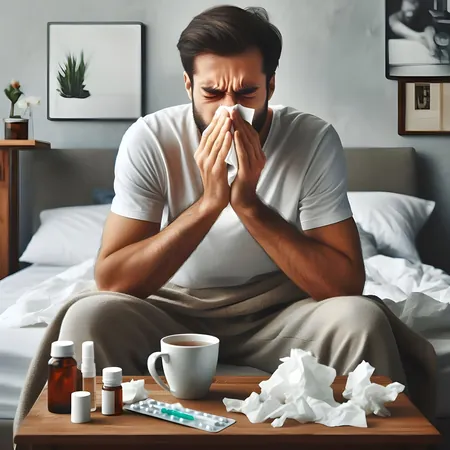
Suraxavir Study Reveals Gender Disparity in Flu Recovery Times – What This Means for Patients!
2025-01-17
Author: Ming
A Study Overview
A groundbreaking trial has unveiled that a single 40-mg dose of the antiviral drug suraxavir marboxil significantly accelerates flu symptom recovery for male patients aged 5 to 65, according to a study conducted by the prestigious China-Japan Friendship Hospital. However, the results painted a strikingly different picture for female participants, who saw no significant improvement in symptom resolution time.
Flu’s Global Threat and Antiviral Limitations
Influenza continues to pose a grave threat to global health, claiming between 290,000 and 650,000 lives annually from respiratory complications. Current antiviral treatments face limitations, especially with growing resistance to neuraminidase inhibitors. This necessity has spurred research into newer polymerase subunit inhibitors, including baloxavir and the newly assessed suraxavir.
Trial Details
The study, titled "Single-dose suraxavir marboxil for acute uncomplicated influenza in adults and adolescents," appeared in the renowned journal Nature Medicine. Researchers set out to track the alacrity of influenza symptom alleviation among participants who had been diagnosed with the virus within the previous 48 hours. Out of the 527 study participants, 55.4% were male.
Participants were split into two groups – 352 individuals received the suraxavir dose while 175 received a placebo for comparison. Key exclusion criteria meant that those with severe health conditions, recent antiviral use, or a history of COVID-19 were not included in the trial. The dominant strain in this study was influenza A, specifically the H3N2 subtype, accounting for 98.5% of cases.
Remarkable Findings: Men Reap the Benefits!
The primary objective of the trial was to measure how swiftly participants experienced relief from flu symptoms, including fever, cough, and muscle pain. Findings indicated that males experienced a median symptom alleviation time of approximately 42 hours compared to an average of 63 hours for those taking placebo. This translates to a remarkable 20.3-hour advantage for male participants, especially notable among children and adolescents.
Despite the impressive results for males, the researchers noted a concerning lack of significant benefits for females. This disparity raised eyebrows and prompted discussions regarding the gender-specific effects of antiviral medications. The complete findings related to women were somewhat buried in supplementary materials, leading to potential oversight in public understanding.
A recent highlight in Nature discussing the trial, titled "Got Flu? Promising Drug Shortens Symptoms," neglected to emphasize that these results were specific to male participants, which raises ethical questions about transparency and reporting in medical research.
What About the Youngsters?
Interestingly, when breaking down data by age, children and adolescents appeared to benefit even more from suraxavir, showing a greater reduction in symptom alleviation time than adults. However, without clear gender differentiation in this age group, uncertainties persist regarding potential further disparities.
Safety First: How Does Suraxavir Stack Up?
Safety assessments revealed that adverse effects were mild to moderate, with reported drug-related incidents in 28.4% of suraxavir recipients versus 23.3% of those on placebo. The most frequent side effects included diarrhea and fleeting irregular heartbeats, particularly among younger patients. Additionally, emerging resistance mutations were noted in some cases, urging the need for ongoing monitoring.
Conclusion
In conclusion, the findings from this suraxavir trial not only spotlight the efficacy of the drug in male patients but also highlight the urgent need for further exploration into gender-specific responses to antiviral treatments. With the flu season fast approaching, understanding these nuances could be crucial for effective patient care. What does this mean for the future of flu treatment? Will pharmaceutical companies address these disparities? Only time—and further research—will tell!



 Brasil (PT)
Brasil (PT)
 Canada (EN)
Canada (EN)
 Chile (ES)
Chile (ES)
 Česko (CS)
Česko (CS)
 대한민국 (KO)
대한민국 (KO)
 España (ES)
España (ES)
 France (FR)
France (FR)
 Hong Kong (EN)
Hong Kong (EN)
 Italia (IT)
Italia (IT)
 日本 (JA)
日本 (JA)
 Magyarország (HU)
Magyarország (HU)
 Norge (NO)
Norge (NO)
 Polska (PL)
Polska (PL)
 Schweiz (DE)
Schweiz (DE)
 Singapore (EN)
Singapore (EN)
 Sverige (SV)
Sverige (SV)
 Suomi (FI)
Suomi (FI)
 Türkiye (TR)
Türkiye (TR)
 الإمارات العربية المتحدة (AR)
الإمارات العربية المتحدة (AR)